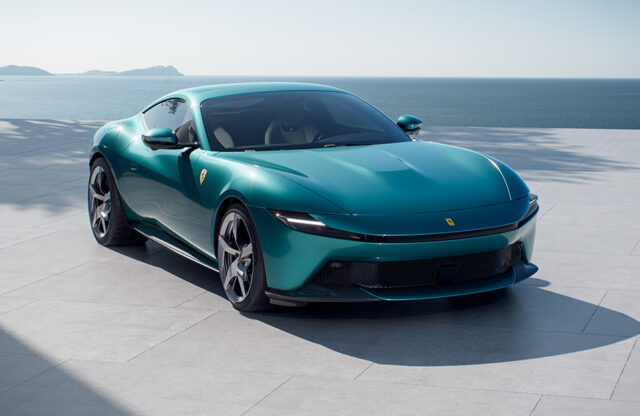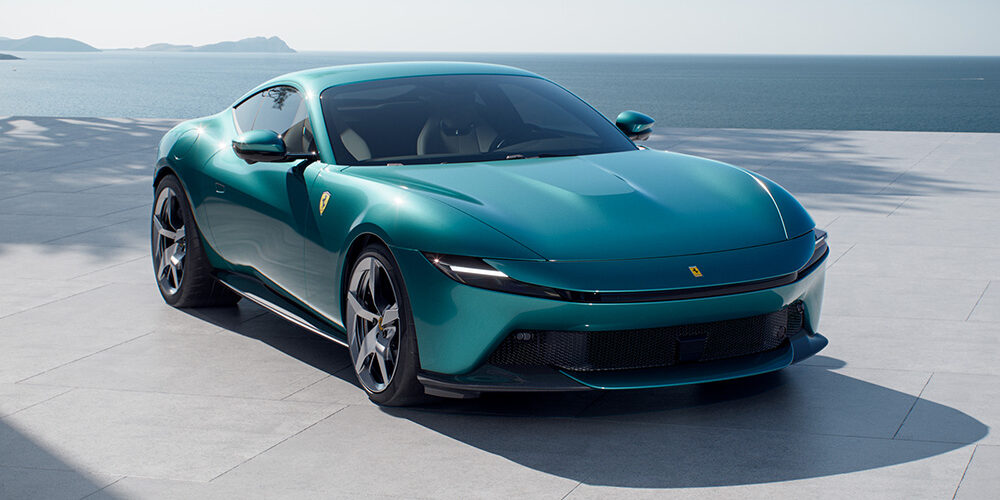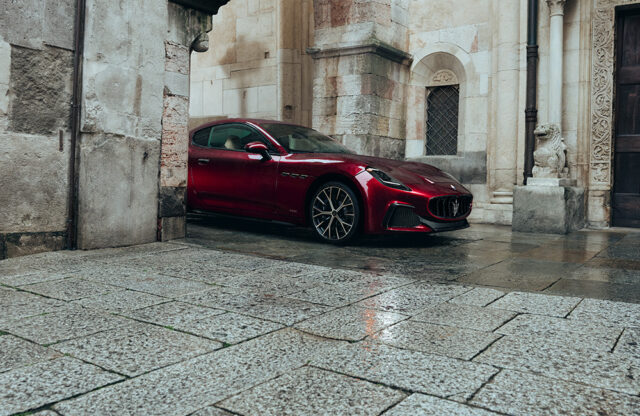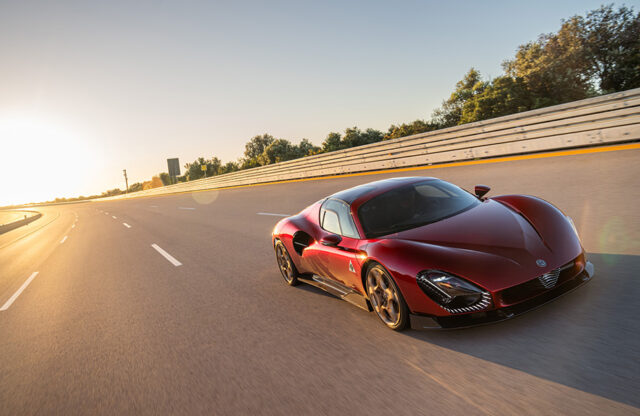Say hello to the Ferrari Amalfi – the replacement for the Roma and a welcome return to physical buttons after the haptic-button era from Maranello.
Five years ago, the Roma launched to a divisive response. Its smooth, restrained styling came as a bit of a shock to some Ferrari watchers – presumably those who couldn’t remember the elegant creations of the 1950s and 1960s – and its eggcrate grille also proved challenging for some. The new car doubles down on the minimalism, and the eggcrate is gone – replaced by a frontal area dominated by a large air intake, and design cues inspired by the Purosangue.
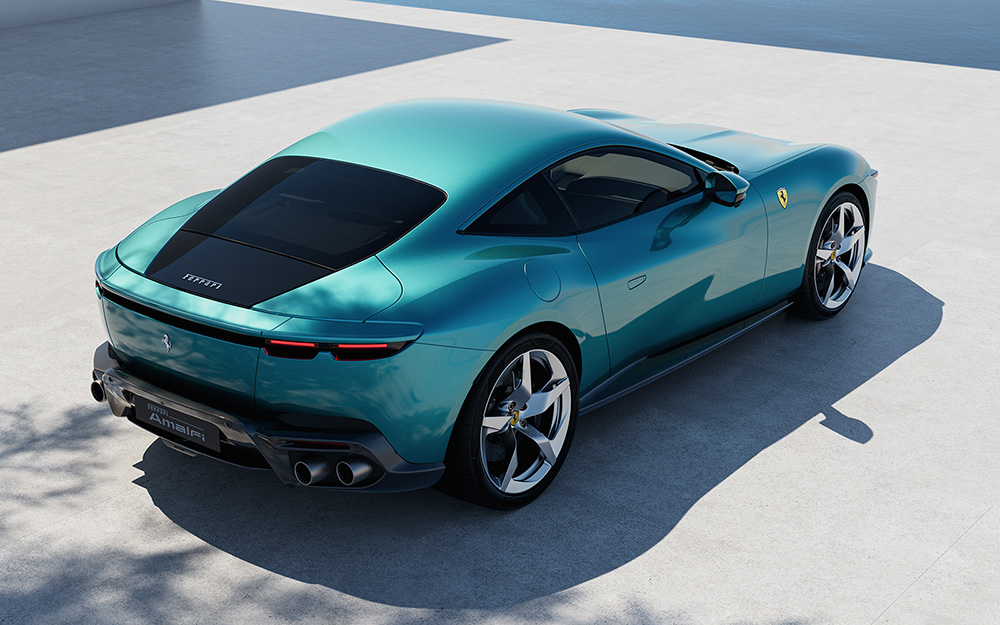
Under the bonnet lies an enhanced version of the F154 twin-turbocharged V8, which now produces 640bhp at 7500rpm, courtesy of a recalibrated turbo-management system and increased turbo speed, all in the aid of throttle response. There are also dedicated pressure sensors for each cylinder bank.
The Amalfi’s engine has been put on a diet, with the block redesigned to remove non-essential non-structural elements, lopping off around a kilogram, and revised camshafts pare back another 1.3kg. Throttle response has been further improved with a flat-plane crankshaft, small low-inertia turbines, twin-scroll technology for individual exhaust-gas management, plus a single-scroll manifold with equal-length runners.
As a result of all this, the Ferrari Amalfi will hit 0-62mph in 3.3 seconds and top out at 198mph.
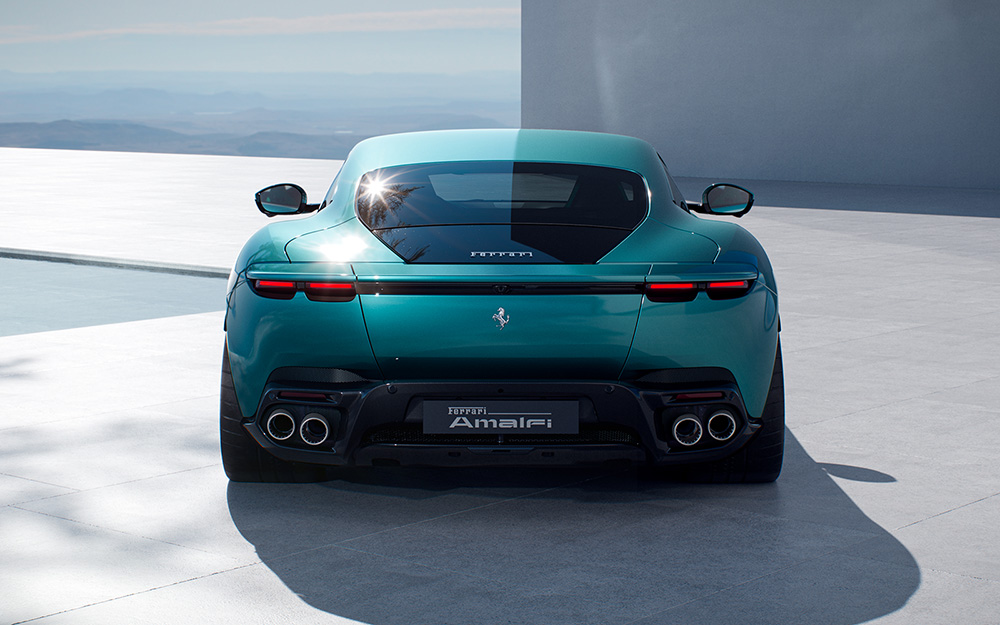
The dry-sump eight-speed dual-clutch transmission that was first introduced on the SF90 has been further optimised with a more robust ECU and revised software in the aid of smoothness and improved shift time. However, perhaps one of the most important improvements over the Roma happens out back.
Ferrari has acknowledged that the Roma’s bark didn’t quite match its beauty, and has revised the exhaust system with a ceramic matrix catalyst with a trimetallic coating incorporating rhodium, platinum and palladium – and, most critically, the sound is managed by a new bypass valve that can be adapted to various driving modes.
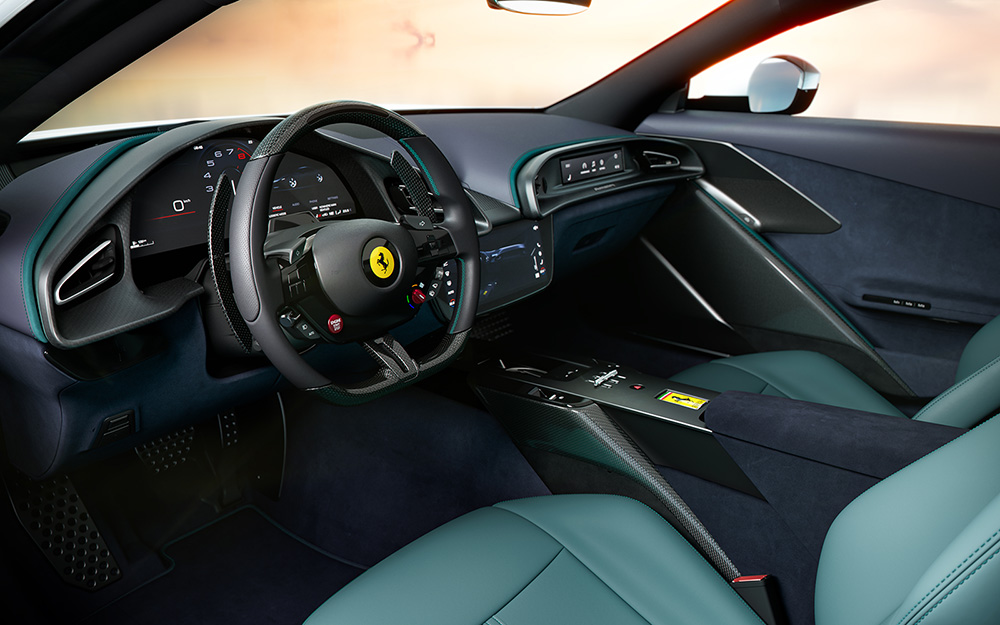
The interior of the Ferrari Amalfi is where the biggest changes over the Roma are likely to be felt – Maranello has acknowledged that the haptic steering wheel concept didn’t work, and has returned to buttons on the wheel. The aluminium start button returns, and the ADAS controls, adaptive cruise control, phone and voice commands are located on the left, while on the right there are selectors for display views, windscreen wipers and indicators; two rotary dials on the back deal with volume and station selection.
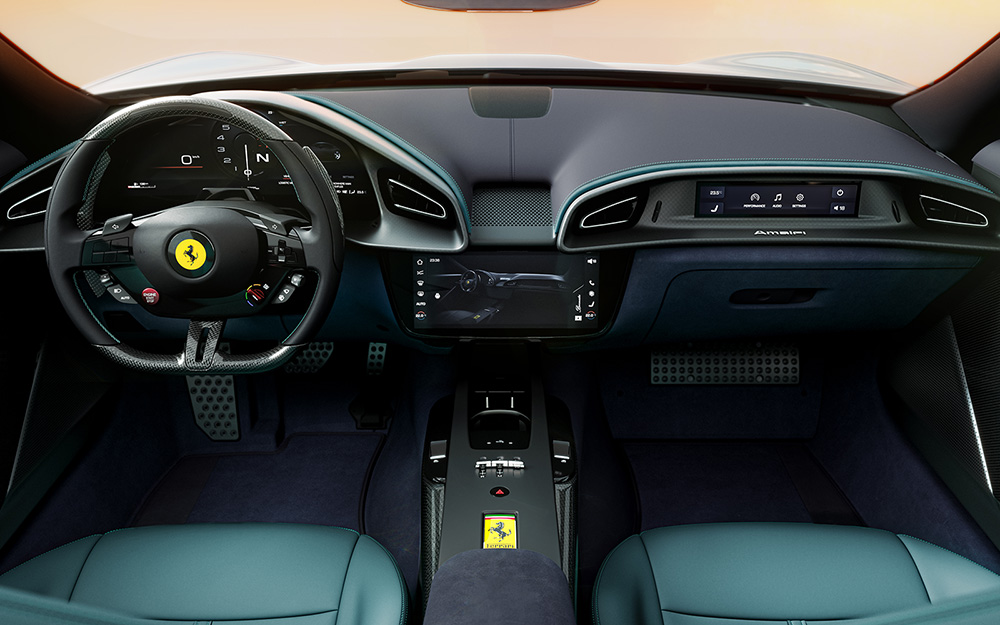
The centre console, another area of contention with the Roma, has also been revised – it’s now milled from a block of anodised aluminium. Two seat types are available, with the comfort option providing three sizes and ten air chambers for the five-programme massage function and ventilation.
The Ferrari Amalfi has three main displays: a 15.6in screen for the driving information, a 10.25in unit in the middle for the multimedia, radio, phone, screen mirroring, climate control, seat adjustments and vehicle settings, and an 8.8in passenger display to petrify the co-driver, with details on the G-forces and engine revs. The system is compatible with Apple CarPlay and Android Auto, and there’s also the option of a 14-speaker, 1200w Burmester audio system.
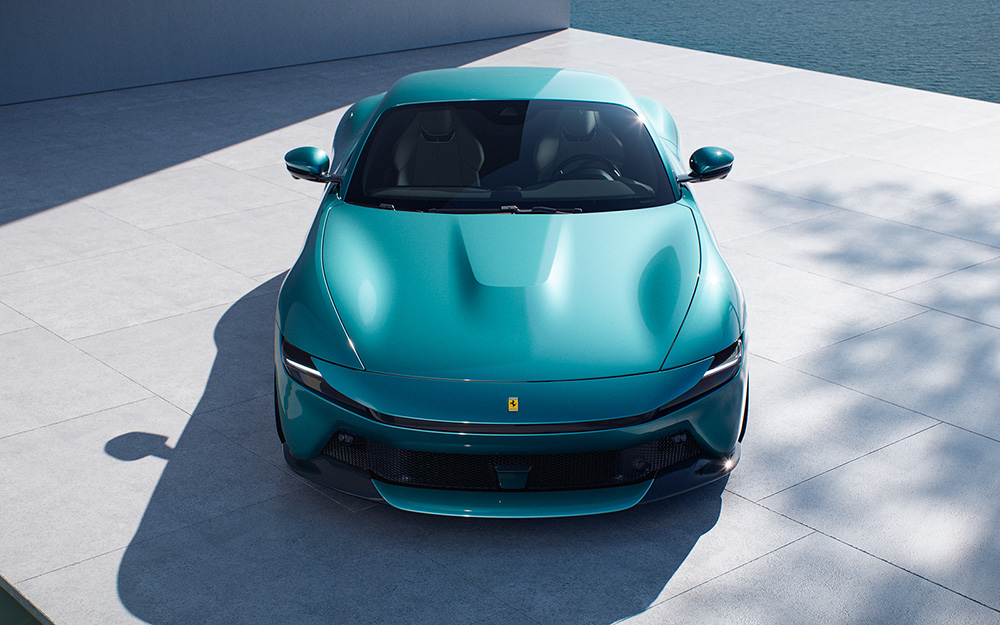
Ferrari has revised the aerodynamics significantly, with a bypass duct above the front headlights leading to the engine bay. There’s also a pair of vortex generators and two splitter-mounted diffusers to cool the brakes.
Underneath there are fairings in front of the wheels to reduce drag, and at the rear the diffuser has been redesigned. The rear, however, is where the biggest change is – there’s an active mobile wing that has three downforce settings depending on speed and accelerative load.
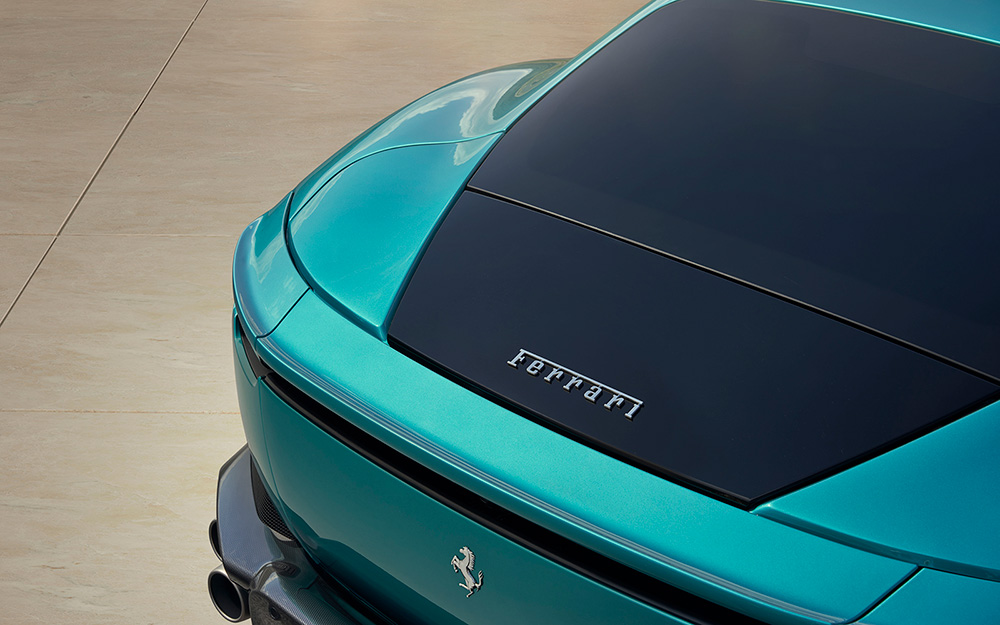
The Ferrari Amalfi uses the ABS Evo system introduced on the 296 GTB. The system absorbs data from the 6D sensor to estimate the car’s speed and figure out the optimal slip for each wheel, delivering brake force appropriately.
The car rides on 20in wheels, with 245/35 R20 tyres up front and 285/35 R20 at the rear that have co-developed with Bridgestone and Pirelli. It has an 80-litre fuel tank and dry weight of 1470kg.
UK and US pricing has yet to be confirmed, but the Ferrari Amalfi is likely to cost around €240,000 in its homeland before taxes, and first deliveries are due in 2026. More information can be found here.
